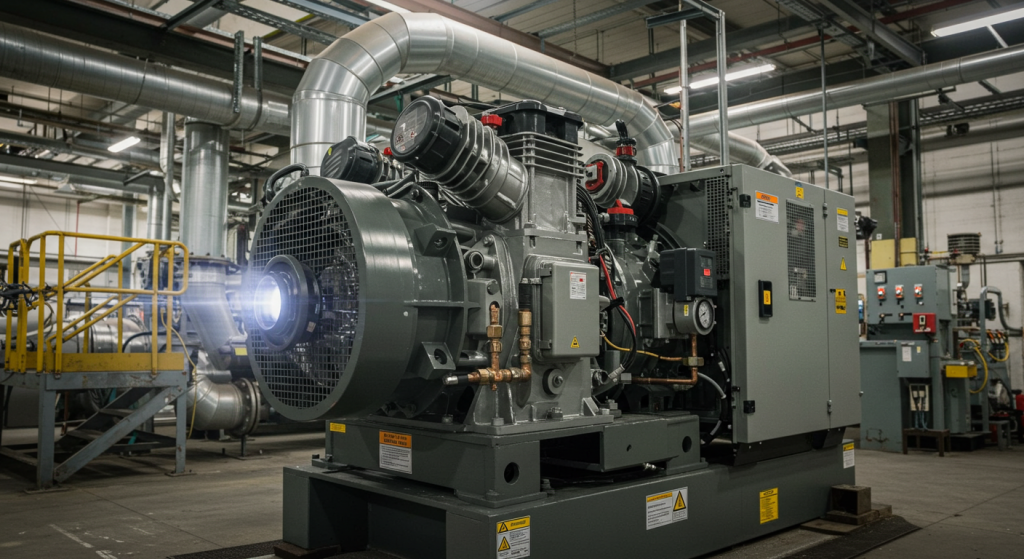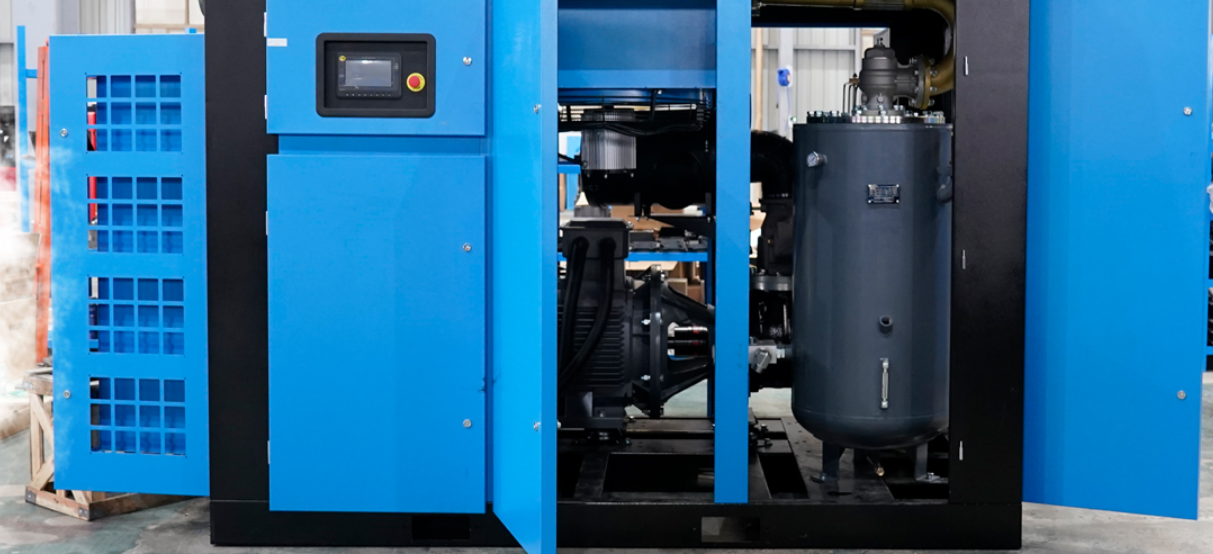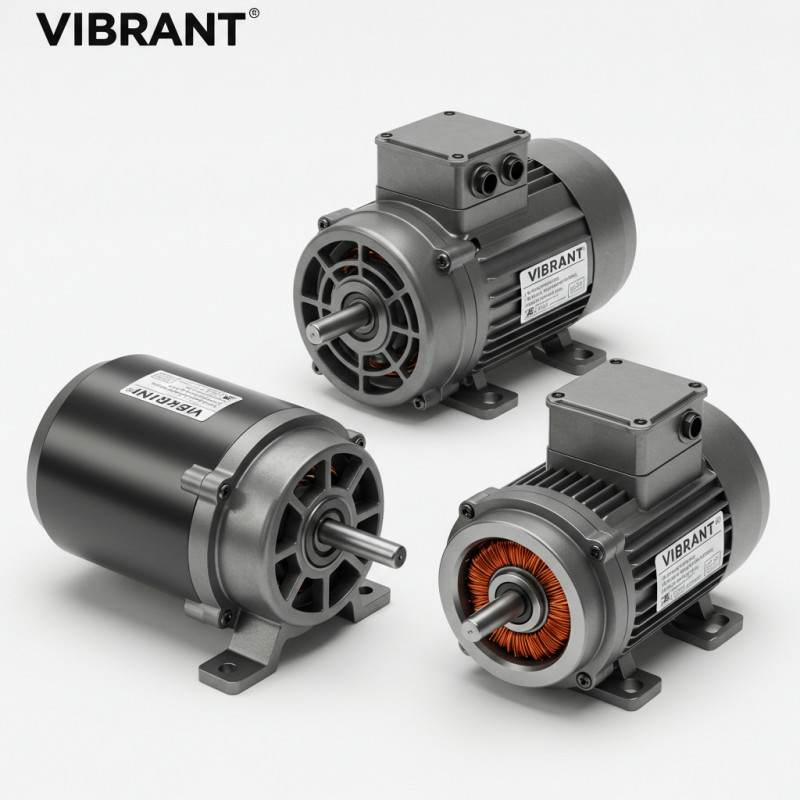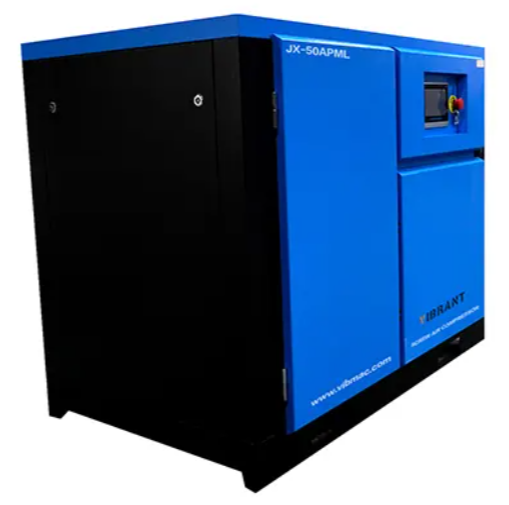Principles Involving Air Compression
How does an air compressor work? An air compressor serves the function of taking in atmospheric air, compressing it, and increasing its pressure. Compression will allow the air to be stored in a pressure tank for future use. The process enables the conversion of air to potential energy, which can be harnessed for different tasks. This follows the pneumatic principle of power-air: compressed air possesses force capability.”
Key Technical Concepts:
Positive displacement: applies to reciprocating or rotary compressors
Dynamic compression: applies to centrifugal compressors
Cycles of intake and discharge of the air
The Main Parts and Their Purpose
All varieties of air compressors, including piston compressors and rotary screw compressors share common characteristics and the function to provide pressurized air efficiently.
- In the system, the compressor pump functions as the heart. It does work in compressing the air, raising its pressure, and reducing its volume. The system’s source of mechanical energy, most commonly an electric motor or a gas engine, drives the air compressor system. The pressurized air is kept idle in air tanks, pressure tanks, or air receivers until needed.
- For the system to work properly, the pressure switch will only enable motor activation after a certain level of PSI has been reached. As a precaution, the unloader valve also vents leftover air during a system shutdown. This check valve, along with others, serves the purpose of preventing any compressed air from flowing back into the pump.
- Every pneumatic tool has a specific output air pressure that needs to be achieved. During operation, the compressor creates heat that is controlled by the cooling system and intercoolers. After filters complete their tasks, moisture separators and air dryers further process the air to ensure all vapor is removed so that only dry air is supplied to the tools.
What is the Working Principle of an Air Compressor?
An air compressor is capable of converting power into mechanical energy in order to store the compressed air as potential energy.
Air Intake
In the first stage of the cycle, an intake air filter draws air into the compressor pump to ensure no dust and other waste particles enter the system.
Reciprocating pistons, rotating screws, or centrifugal pumps can either compress the air or perform compression using centripetal pumps. Different types of compressors have different compression ratios.
Cooling and Moisture Removal
To protect the system, moisture separators are used to eliminate water vapor. Air purifiers also assist in moisture removal.
Storage and Use
An air receiver tank can store compressed air for later use. It can be harnessed with tools that function at a specified output pressure. A regulator changes output pressure to match the requirements of the tools.
Air pumps offer precise regulation of airflow and pressure, enabling the operation of pneumatic tools and industrial machinery.
Performance Metrics: Understanding CFM, PSI, and More
Performance is defined by a multitude of factors:
• CFM – Cubic Feet per Minute: Rate of airflow.
• PSI – Pounds per Square Inch: Pressure of air.
• HP: Power of motor.
• Duty Cycle: Time worked against rest time.
• Tank Capacity: Capacity measurement in gallons or liters.
In a nutshell, balanced performance is characterized by high CFM and PSI alongside efficiency.

Applications of Compressed Air
In the modern economy, compressed air is aptly referred to as the “fourth utility”. It serves as a utility that simplifies powering various systems in industries with effectiveness, cost savings, and accuracy.
Pneumatic Tools
Pneumatic tools such as impact drills, wrenches, grinders, and even nail guns are commonly used. Unlike their electric counterparts, these devices are easier to use and more portable. Because of this, they tend to be more durable.
Industrial Manufacturing
In addition to robotics, industrial air compressors provide power to conveyor belts, air-powered clamps, and packaging machines within the factories. Compressed air is an efficient energy source that can be used for automated systems such as assembly lines and material handling systems that require reliable operations.
Automotive Workshops
Mechanics utilize air in tools like tire inflators, spray painting equipment, air ratchets, and lifts. Tools that utilize compressed air need a high-pressure supply, and they offer control over the energy used, enabling precise and clean work.
HVAC Systems
The AC units used in offices and homes have compressors for controlling airflow for both heating and cooling. These devices pressurize air for heating and cooling, thus maintaining temperature equilibrium in both residential and commercial structures.
Paint Spraying
Precision air sprayers are utilized for painting in the furniture and automotive industries because of their precision and great attention to detail. They can be used for different types of paints, making them very adaptable.
Air Compressor Maintenance
The proper maintenance of all types of air compressors, whether reciprocating, rotary screw, or oil-less, directly influences their efficiency, safety, and productivity. Through maintenance, the useful life and efficiency of the air compressor are enhanced.
- Start with the filters, which must be checked and replaced to prevent dust intake. Daily removal of condensate from the air tank prevents rust damage.
- Check that all loose connections like hoses, fittings, and other parts are sealed so air pressure is maintained. Also, for lubricated compressors, keep oil levels within the recommended range and do not exceed the scheduled maintenance for oil changes.
- Always check the cooling system, as the lack of unrestricted airflow results in overheating. Clearing airflow paths that are critical to heat dissipation improves overall system efficiency.
Air Compressors Safety Guidelines and Best Practices
All pieces of equipment, including air compressors, should be used following prescribed safety procedures. Safety ensures productivity is not compromised. The use of an air compressor requires that its output be regulated to a maximum allowed value to prevent dangerous accumulation. Pressure relief valves should also be functioning; they must allow air to escape below a certain threshold to avoid damage from over-pressurization.
Maintenance for air-cooled compressors is essential for promoting the unit’s functionality. The units must be placed where there is free airflow to prevent overheating. As with any maintenance procedure, turning off power switches, unplugging the system, or removing batteries is essential to prevent electric shock and system activation.
Conclusion
Fundamentals of air compression, machine components, and defined maintenance routines enhance performance in residential and industrial setups. An understanding of air compressors aids in selection and optimization. For this reason, check VIBRANT for a full range of compressors. Our systems are dependable, energy-efficient systems that ensure operational dependability.









